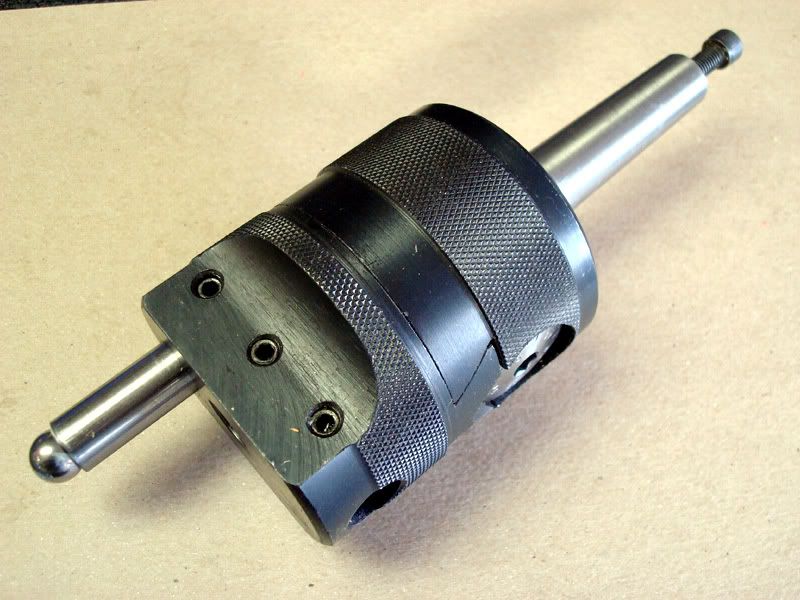BLATANTLY COPIED FROM THAT "OTHER" FORUM I POST ON---
I did up one of the tailstock boring head rigs a while back (can't find the thread now) and it works well. The boring head came in a bunch of stuff I got cheap and had a non-removable 3/4" straight arbor. I had another one with R-8 arbor to fit my mill so I decided to dedicate this one for tailstock use and turned a 2MT taper to fit the tailstock.
Only problem I had was getting the centers to fit and work smoothly. I bumped into the following info about using a single ball bearing at each end of the work somewhere on the web (apologies to the creator) and found it to work very well. I keep it safely in my "Lathestuff" folder for occasional use. Never can remember it for some reason.
Quote:
"When offsetting the tailstock for taper turning, or using a special
tailstock fixture for the same purpose, the 60 degree center points don't
fit well in the centerholes of the work being taper turned.
This method needs custom-made lathe centers for both headstock and tailstock.
The sharp point is turned off for a short distance, and centerdrilled just
as is done for the work being turned.
Hardened steel balls are captured in the centerholes between the lathe
centers and the work, at each end.
The correct centerhole size is important in relation to the bearing ball diameter.
For a standard 60 degree centerdrill, the opening of the hole at the ends
should ideally be between 88% and 90% of the diameter of the ball. (.389 for my .4325 ball)
If larger, there may not be enough clearance between the lathe center
and work to allow any offset.
If the hole's opening is smaller than 87% of the ball's diameter, only
the corner of the hole's opening will contact the ball and the whole
thing may come loose under heavy cutting pressure.
In practical experience, I've had very good results with this technique
while turning morse taper shanks.
For the purpose of accurately setting the tailstock setover, the effective
length of the workpiece is measured between the centers of each ball.
Just mike the workpiece with the balls in place, and subtract the total of
one half the diameter of each ball.
Be sure to use your favorite tailstock center lube on that end
(I use white lithium grease)." End Quote
Here's the last setup used with a .4375" ball. (I have an endless supply of those from a certain unnamed imported luxury car sealed double row front wheel bearing.






































































